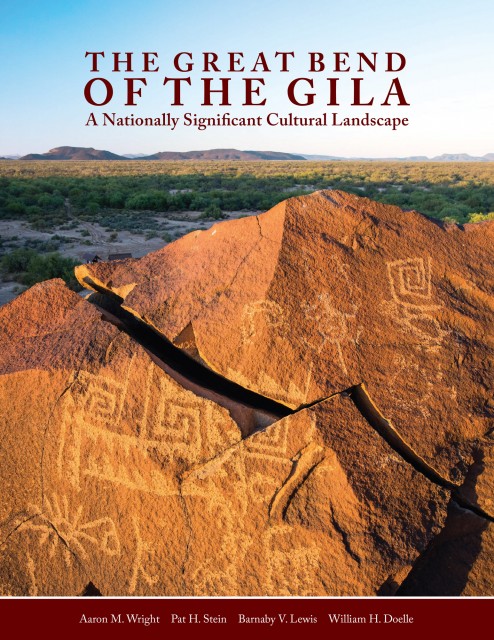- Home
- >
- Press Releases/Announcements
- >
- Study Reveals National Significance of the Great B...
Thursday, December 3rd
NEWLY RELEASED STUDY SHOWS NATIONAL
SIGNIFICANCE OF ARIZONA CULTURAL RESOURCES
ANALYSIS EMPHASIZES CULTURAL IMPORTANCE OF ‘THE GREAT BEND OF THE GILA’;
REINFORCES NEED FOR PERMANENT PROTECTION

Phoenix, AZ. – An in-depth study released today by the National Trust for Historic Preservation and Archaeology Southwest provides a historical and tribal perspective on the significance of the cultural resources and natural landscape encompassed within the Great Bend of the Gila National Monument Proposal, 84,000-acres of Bureau of Land Management Land along a stretch of the lower Gila River in southwest Arizona.
The study, The Great Bend of the Gila: A Nationally Significant Cultural Landscape, is co-authored by experts on the history, archaeology, and tribal significance of the area. It details 12,000 years of human history along this river corridor, as documented by an array of treasures that remain today, including petroglyphs, geoglyphs, ancient trails, historic roads, and a civil war site.
Archaeologist and study co-author William Doelle emphasized the depth of the national significance of the cultural resources outlined in the study. “The Great Bend of the Gila speaks to aspects of our country’s cultural makeup in a way no other place can,” he said. “The area’s cultural resources are truly world-class, and the region’s history is a one-of-a-kind chapter in our country’s saga.”
Rebecca Knuffke, Program Manager of Public Lands for the National Trust for Historic Preservation, underscored the importance of national monument designation for the area. “The Great Bend of the Gila is a nationally significant American treasure that deserves protection as a national monument. This designation will help protect lands and resources sacred to many Arizona tribes, while also bringing economic benefits to both Maricopa and Yuma counties through increases in cultural and heritage tourism.”
Barnaby V. Lewis, co-author of the study and Tribal Historic Preservation Officer for the Gila River Indian Community in Sacaton, Arizona, emphasized that the Great Bend of the Gila is a sacred, ancestral landscape to the Native American communities who identify with this area and its cultural resources. “The O’odham believe that everything in nature within the Great Bend of the Gila is of great cultural significance,” he said. “Evidence of the existence of our Huhugam ancestors’ travels throughout this land—such as shrines, prehistoric trails, archaeological sites, and petroglyphs—is certain.”
The full Cultural Resources Study, prepared by Archaeology Southwest for the National Trust for Historic Preservation, is available here, or download it now (PDF).
The National Trust for Historic Preservation, a privately funded nonprofit organization, works to save American’s historic places. Learn more at SavingPlaces.org.
Archaeology Southwest is a private 501(c)(3) nonprofit organization based in Tucson, Arizona, that explores and protects the places of our past across the American Southwest and Mexican Northwest. For three decades, Archaeology Southwest has practiced a holistic, conservation-based approach known as Preservation Archaeology. By exploring what makes a place special, sharing this knowledge in innovative ways, and enacting flexible site protection strategies, we foster meaningful connections to the past and respectfully safeguard its irreplaceable resources. Learn more at www.archaeologysouthwest.org.
###
Explore the News
-
Join Today
Keep up with the latest discoveries in southwestern archaeology. Join today, and receive Archaeology Southwest Magazine, among other member benefits.